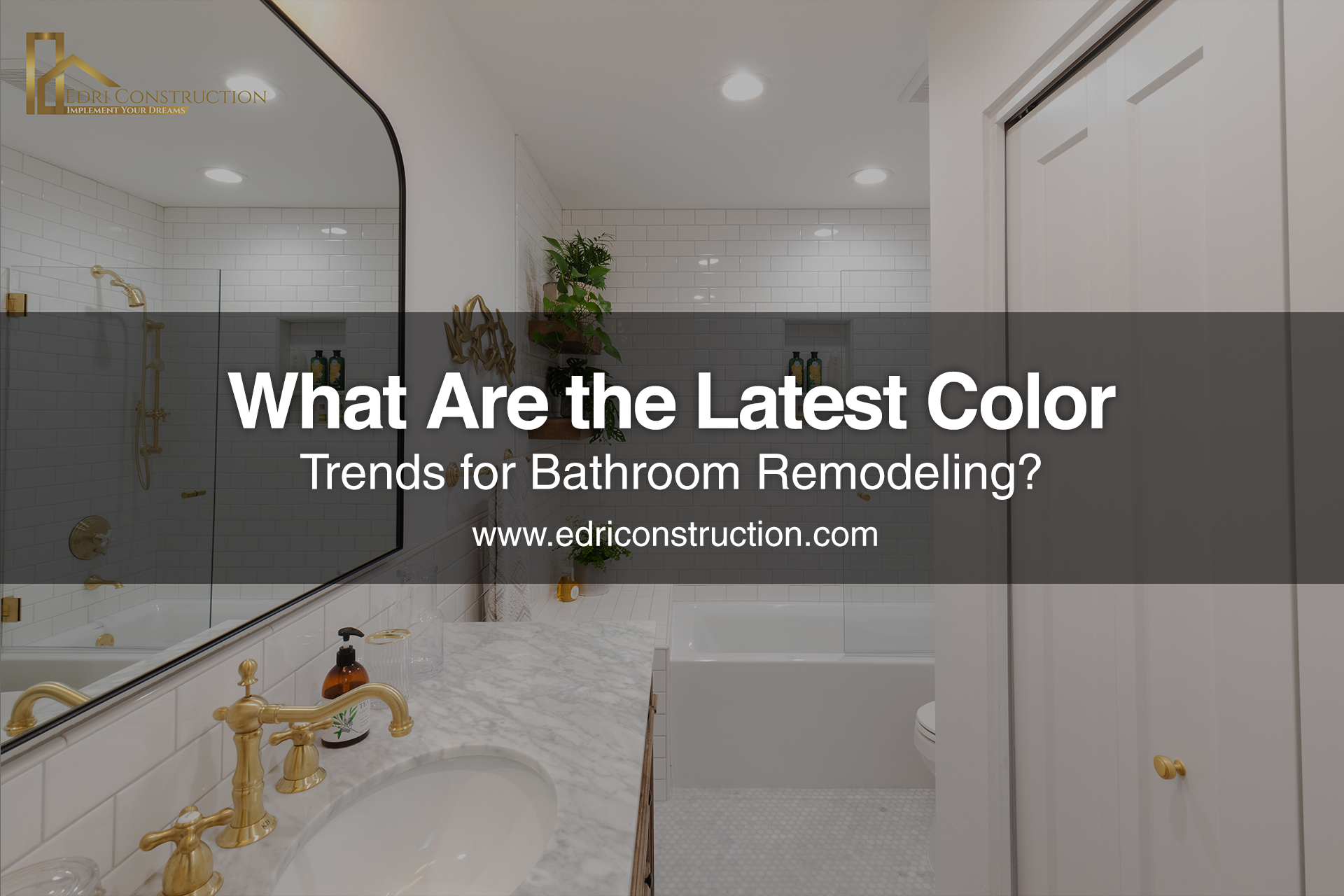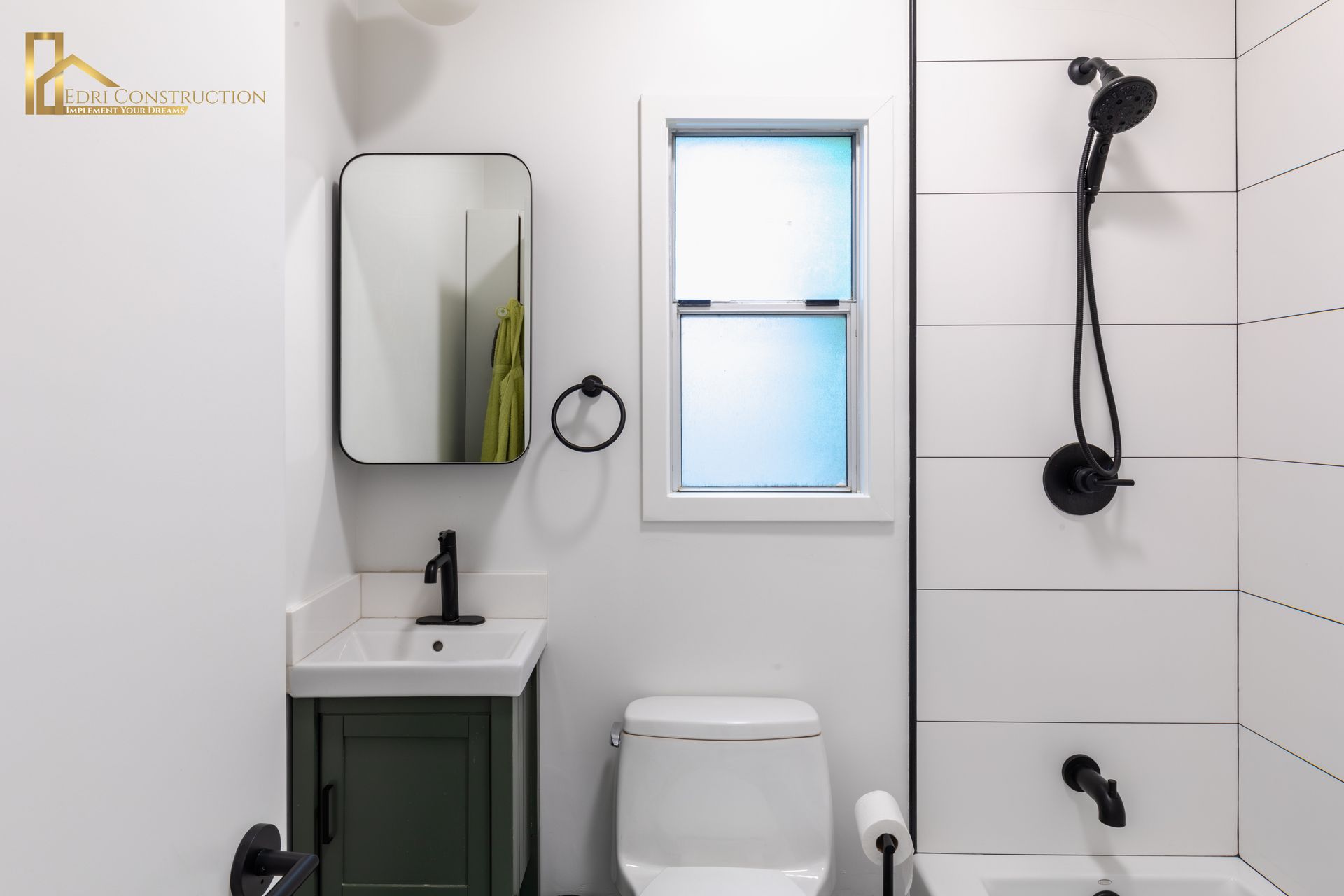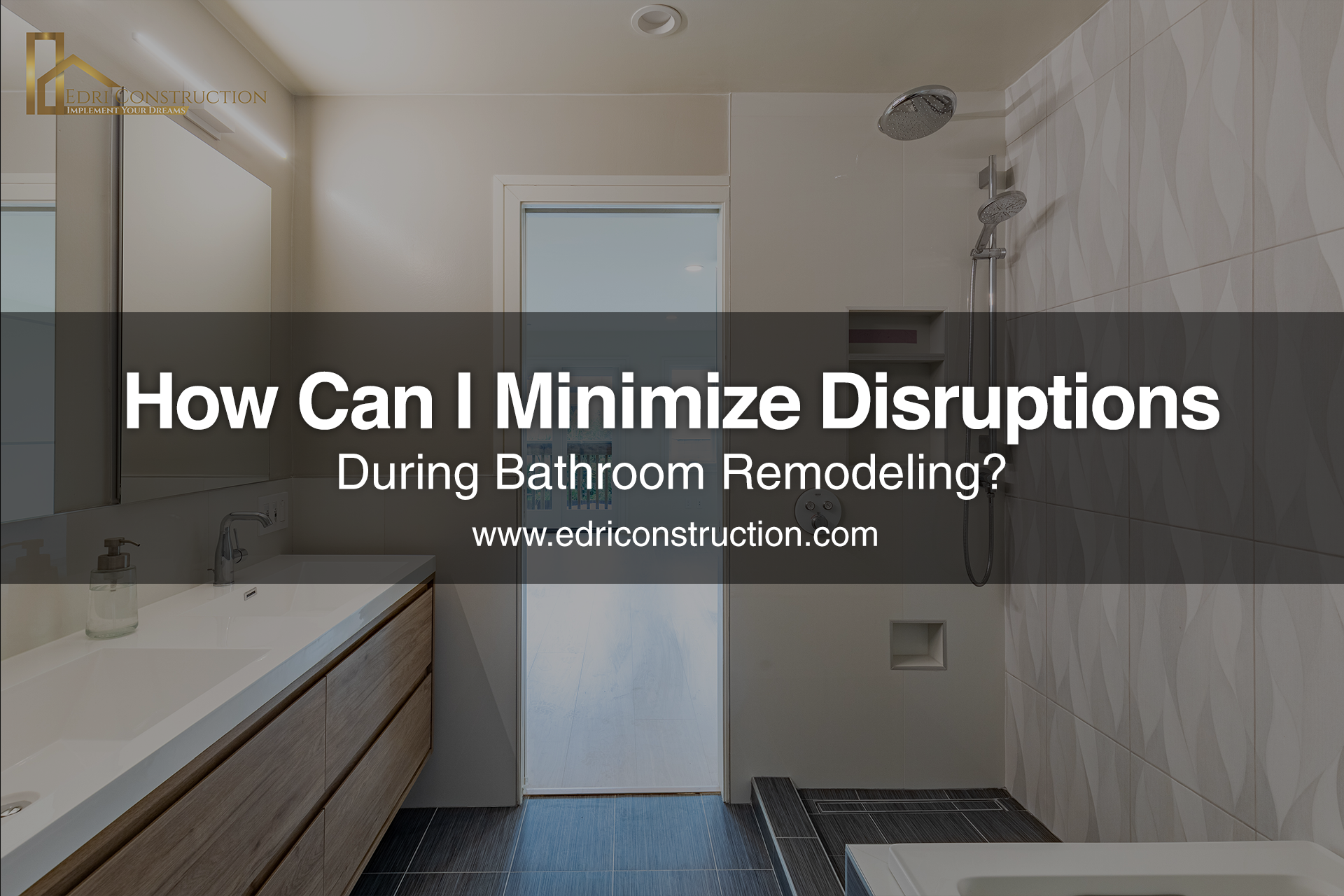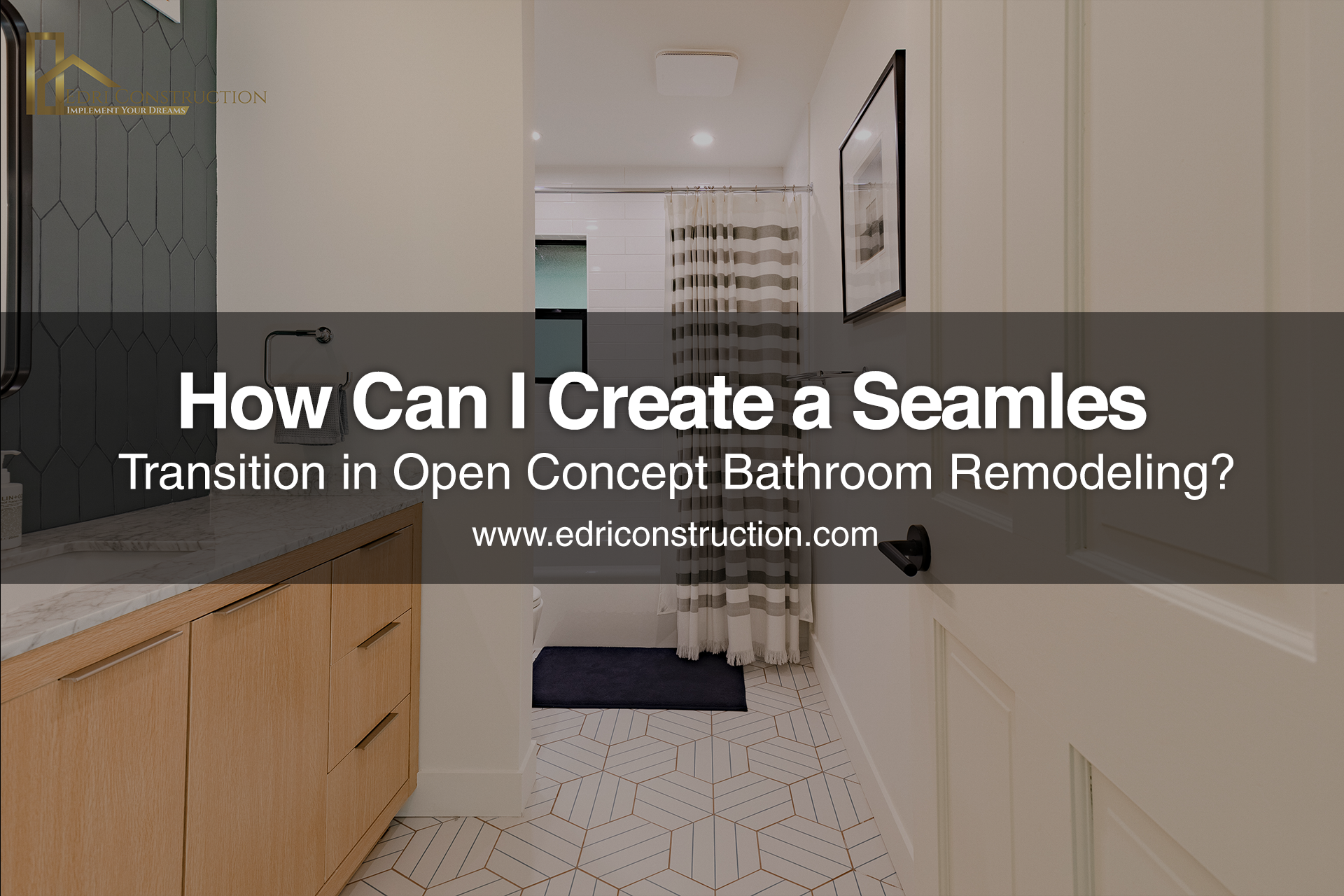What Are the Latest Color Trends for Bathroom Remodeling?

INTRODUCTION
When it comes to sprucing up your home, few projects hold as much transformative power as kitchen and bathroom renovations. These spaces aren't just functional; they also serve as focal points for style and comfort. But while kitchens often steal the spotlight, let's not overlook the importance of bathroom remodeling. Your bathroom is more than just a utilitarian space; it's your personal oasis, a place to unwind and recharge.
Gone are the days of boring, monochromatic bathrooms. Today, homeowners are embracing bold hues and playful palettes to inject personality into their spaces. One of the hottest trends right now is the use of earthy tones like soft greens, warm browns, and sandy neutrals. These colors evoke a sense of tranquility and connection to nature, perfect for turning your bathroom into a serene retreat.
Another popular choice is the timeless combination of black and white. This classic pairing never goes out of style and adds a touch of sophistication to any bathroom. Whether you opt for sleek black fixtures against a backdrop of white subway tiles or vice versa, you can't go wrong with this chic color scheme.
Of course, no discussion of bathroom color trends would be complete without mentioning the importance of accessibility. As more homeowners choose to age in place, designing bathrooms with seniors in mind has become increasingly important. This means incorporating features like grab bars and non-slip flooring, as well as choosing colors that enhance visibility and contrast for those with vision impairments.
Whether you're planning a complete bathroom overhaul or just looking to refresh your space, keeping up with the latest color trends is key to achieving a look that's both current and timeless. So go ahead, unleash your creativity, and transform your bathroom into a haven of style and comfort.
Remodeling a Bathroom for Seniors: Embracing Accessibility with Style

As our society ages, there's a pressing need to redesign bathrooms to cater to the needs of seniors. Accessibility becomes paramount, but that doesn't mean sacrificing style. The latest trends emphasize colors that not only look good but also enhance safety.
Gone are the days of stark white bathrooms. Instead, designers are opting for softer, more inviting hues. Picture walking into a bathroom painted in gentle shades of beige, pale gray, or creamy whites. These colors not only create an airy and open feel but also offer excellent contrast against fixtures, making them easier to see, especially for those with visual impairments.
But accessibility isn't just about physical safety; it's also about promoting emotional well-being. The bathroom should be a place of refuge, a sanctuary where one can unwind and relax. By incorporating calming hues like blues and greens, we can transform an ordinary bathroom into a spa-like retreat, where seniors can escape the stresses of daily life and find solace in moments of quiet reflection.
When designing bathrooms for seniors, it's essential to prioritize both safety and style. Light, neutral tones provide the perfect backdrop for fixtures, while accents of muted blues and greens create a tranquil ambiance. Together, these elements not only enhance accessibility but also promote relaxation and comfort, ensuring that the bathroom remains a haven for seniors for years to come.
Guest Bathroom Remodeling: Infuse Warmth and Hospitality

Guest bathrooms present a special chance to play with colors that radiate warmth and hospitality. Choose welcoming shades such as cozy taupe, delicate blush, or soothing terracotta to craft an inviting ambiance. These colors infuse a sense of refinement without overshadowing the room, ensuring guests feel instantly comfortable.
To elevate the visual appeal, think about combining these tones with metallic touches or elements of natural wood. Picture a guest bathroom adorned with shimmering metallic accents or adorned with the organic beauty of wood. These additions not only complement the chosen colors but also contribute to an overall aesthetic that exudes sophistication and charm.
Now, let's explore why these color choices are particularly well-suited for guest bathrooms. When guests visit, they should feel embraced by the warmth of their surroundings. Warm taupe, soft blush, and gentle terracotta create a welcoming environment that immediately puts visitors at ease. Whether they're staying for a night or a week, guests will appreciate the thoughtfulness and care put into every detail of their experience.
Pairing these inviting hues with metallic accents or natural wood elements adds depth and texture to the space. Imagine the interplay of light and shadow dancing across a gleaming brass faucet or the rich grain of a wooden vanity. These subtle yet impactful details elevate the guest bathroom from functional to fabulous, leaving a lasting impression on visitors.
Guest bathrooms are a canvas for creativity, where colors can transform a space into a welcoming retreat. Warm taupe, soft blush, and gentle terracotta set the stage for hospitality, while metallic accents and natural wood elements add a touch of luxury. By carefully curating every aspect of the design, you can ensure that your guests feel pampered and cherished during their stay.
San Francisco Bathroom Remodeling: Embracing Urban Elegance

In vibrant metropolises such as San Francisco, renovating bathrooms becomes a fusion of practicality and urban chic. The color scheme predominantly features neutral tones with a modern twist, mirroring the cosmopolitan ambiance of the city. Imagine a palette dominated by shades of sophisticated charcoal gray, sleek black, or the industrial allure of urban steel. These hues not only exude contemporary flair but also resonate with the city's dynamic spirit.
To add a touch of warmth and personality to the space, consider incorporating accents of deep navy or rich emerald green. These colors inject a sense of depth and luxury, creating a harmonious balance between style and comfort. Picture the serene elegance of a navy accent wall or the opulent richness of emerald green tiles, transforming the bathroom into a haven of urban sophistication.
Incorporating ample lighting is essential to highlight the design elements and create a welcoming atmosphere. Consider installing recessed lighting or sleek pendant lights to illuminate the space and enhance its contemporary appeal. Additionally, strategically placed mirrors can help maximize natural light and create the illusion of a larger, more expansive bathroom.
When selecting furniture and accessories, choose pieces that blend seamlessly with the modern aesthetic while adding a touch of personality. Opt for streamlined vanities with ample storage space, sleek geometric mirrors, and minimalist hardware to complement the overall design. Add pops of color and texture with plush towels, stylish bath mats, and decorative accents that reflect your personal style.
Steps for Remodeling a Bathroom: From Concept to Completion
Embarking on a bathroom renovation can seem like diving into an endless ocean of tasks, but don't fret! By breaking down the process into manageable steps, you'll discover that transforming your bathroom can be both feasible and even fun.
Next, it's time to roll up your sleeves and get to work. Start by clearing out the existing bathroom fixtures and materials. This may involve removing old tiles, cabinets, and plumbing fixtures. Don't be afraid to enlist the help of friends or professionals for this step if needed.
Once the renovation is complete, take some time to admire your handiwork. Bask in the satisfaction of knowing that you transformed your bathroom into a space that's both beautiful and functional. And don't forget to treat yourself to a relaxing soak in your new tub – you've earned it!
While a bathroom renovation may seem daunting at first, it's entirely manageable with careful planning and execution. By breaking the process down into manageable steps and staying organized, you can create the bathroom of your dreams without breaking a sweat. So dive in, and enjoy the journey!
Remodeling Bathroom Floor: Elevate Style with Practicality

When considering bathroom flooring options, durability becomes paramount. It's essential to select a material that can withstand moisture without succumbing to warping or degradation over time. Fortunately, there are several excellent choices that meet these criteria, including porcelain tiles, luxury vinyl planks, and ceramic tiles. These materials are renowned for their ability to resist water and maintain their quality over the long term, making them perfect for bathroom environments.
Porcelain tiles are a popular choice for bathroom flooring due to their exceptional durability and water resistance. Made from dense clay fired at high temperatures, porcelain tiles are highly resistant to water penetration, making them an ideal option for bathrooms where moisture levels are high. Additionally, porcelain tiles come in a wide range of colors, patterns, and textures, allowing homeowners to create a customized look that suits their style preferences.
Luxury vinyl planks, also known as LVP, are another excellent choice for bathroom flooring. These synthetic flooring materials mimic the look of natural hardwood but offer superior water resistance and durability. Luxury vinyl planks are constructed from multiple layers, including a waterproof core that prevents moisture from seeping through the surface. As a result, LVP flooring is highly resilient to water damage and can withstand the rigors of daily bathroom use with ease.
Ceramic tiles are a classic option for bathroom flooring that continues to remain popular for good reason. Made from natural clay that is kiln-fired to harden the material, ceramic tiles are inherently resistant to water and moisture. This makes them an excellent choice for bathrooms, where spills and splashes are common. Additionally, ceramic tiles are available in a wide array of sizes, shapes, and designs, allowing homeowners to create unique patterns and layouts to suit their individual tastes.
In addition to their durability and water resistance, all three of these flooring options are relatively low maintenance, making them easy to clean and maintain. Regular sweeping and occasional mopping are typically all that's needed to keep these floors looking their best. Furthermore, because they are resistant to water damage, they are less likely to harbor mold and mildew, promoting a healthier indoor environment.
When selecting bathroom flooring, it's essential to consider not only durability and water resistance but also aesthetic appeal and budget. Fortunately, porcelain tiles, luxury vinyl planks, and ceramic tiles offer the perfect combination of style, durability, and affordability, making them versatile options for any bathroom renovation project. With proper care and maintenance, these materials can provide years of reliable performance, ensuring that your bathroom remains both functional and beautiful for years to come.
Remodeling a Bathroom Cost Estimates: Budgeting for Success

Embarking on a bathroom renovation adventure demands a firm grasp of your financial boundaries, contingent upon your envisioned project scale and material preferences. Several variables come into play when estimating costs, such as labor fees, material expenses, regulatory permits, and unforeseen surprises. To steer clear of budgetary turbulence, it's prudent to gather estimates from several trustworthy contractors, distinguish must-have upgrades, and designate a reserve for unexpected financial bumps. Moreover, exploring value-driven alternatives can strike a harmonious balance between quality, affordability, and aesthetic appeal.
When plotting your bathroom remodel, the first order of business is setting a realistic budget. This monetary roadmap should reflect the extent of the overhaul you desire and the materials you fancy. Bear in mind that the project's magnitude and your choice of fixtures and finishes will significantly influence the final bill.
The cost breakdown of a bathroom renovation typically includes expenses for labor, materials, permits, and unforeseen eventualities. Labor costs encompass the fees charged by contractors, plumbers, electricians, and any other professionals involved in the renovation process. Materials, ranging from tiles and countertops to faucets and lighting fixtures, contribute significantly to the overall expenditure. Don't overlook permit fees, as regulatory requirements vary by location and could impact your budget. Additionally, it's wise to set aside a contingency fund for unforeseen expenses, like structural issues or unexpected delays.
To mitigate the risk of budget overruns, casting a wide net for quotes from reputable contractors is advisable. This allows you to compare prices, assess the scope of work proposed, and ensure that the estimates align with your financial parameters. While it may be tempting to go with the lowest bid, be wary of unusually low offers, as they could signal subpar workmanship or the use of inferior materials.
In the quest for cost-effective solutions, explore value-engineering options that deliver bang for your buck. This entails seeking out alternatives that offer a balance between quality and affordability without sacrificing style or performance. For instance, opting for high-quality yet budget-friendly materials like porcelain tile or laminate countertops can help stretch your budget without compromising aesthetics.
Embarking on a bathroom remodel requires careful financial planning and strategic decision-making. By establishing a realistic budget, obtaining multiple quotes, prioritizing essential upgrades, and exploring value-driven alternatives, you can navigate the renovation process with confidence and avoid budgetary pitfalls.
Conclusion
In conclusion, embarking on a bathroom remodeling journey is like embarking on a quest to redefine and rejuvenate one of the most intimate spaces in your home. It's a chance to infuse your personal style while upgrading the practicality and comfort of the area. Staying in tune with the latest color trends and embracing a methodical approach can lead to the creation of a bathroom that not only caters to your needs but also surpasses your wildest expectations. Whether you're tailoring the space for seniors, refreshing a guest bathroom, or aiming for a sleek urban vibe, integrating fashionable colors and well-considered design elements will catapult your bathroom into a realm of unparalleled style and function. So, let's dive in, get our hands dirty, and embark on this exhilarating journey to transform your bathroom into a haven of luxury and functionality.
Bathroom renovation isn't just about swapping out fixtures and tiles; it's a holistic process that demands attention to detail and a keen eye for aesthetics. One of the first steps in this journey is to explore the ever-evolving world of color trends. From serene pastels to bold jewel tones, the possibilities are endless. By keeping abreast of the latest color palettes, you can infuse your bathroom with a fresh, contemporary vibe that reflects your individual taste and personality.
FAQ: Bathroom Remodeling
How long does a bathroom remodel usually take?
The duration of a bathroom remodel depends on the complexity of the project and the availability of materials and contractors. A minor remodel involving cosmetic updates like painting and fixture replacements may take as little as two to three weeks, while a major renovation involving structural changes or extensive tile work can take six weeks or more.
Do I need a permit for my bathroom remodel?
Whether a permit is required for your bathroom remodel depends on the scope of work and local building codes. Generally, permits are necessary for projects involving structural changes, plumbing or electrical work, or alterations to the existing footprint of the bathroom. It's advisable to check with your local building department to determine specific permit requirements for your project.
What are some tips for maximizing space in a small bathroom?
In a small bathroom, maximizing space is essential for functionality and aesthetics. Some tips include choosing space-saving fixtures such as wall-mounted toilets and pedestal sinks, utilizing vertical storage with tall cabinets or shelving, incorporating mirrors to create the illusion of space, and opting for light, neutral colors to visually expand the room.
How can I make my bathroom more accessible for seniors or individuals with mobility issues?
Making a bathroom more accessible involves incorporating features such as grab bars, curbless showers, wider doorways, and slip-resistant flooring. Additionally, installing a comfort-height toilet and adjustable shower fixtures can enhance accessibility and comfort for seniors or individuals with mobility challenges.
What are some popular flooring options for bathrooms?
Popular flooring options for bathrooms include ceramic or porcelain tiles, luxury vinyl planks, natural stone such as marble or granite, and waterproof laminate flooring. Each material offers unique benefits in terms of durability, water resistance, and aesthetics, allowing homeowners to choose based on their preferences and budget.
How can I create a spa-like atmosphere in my bathroom?
To create a spa-like atmosphere in your bathroom, consider incorporating elements such as a soaking tub, rainfall showerhead, ambient lighting, soothing color palette, and natural materials like wood or stone. Adding plush towels, aromatic candles, and greenery can also enhance the sense of relaxation and tranquility.
What are the advantages of hiring a professional contractor for bathroom remodeling?
Hiring a professional contractor for bathroom remodeling offers several advantages, including access to skilled labor and specialized expertise, adherence to building codes and regulations, project management and coordination, and access to quality materials and suppliers. Additionally, contractors can help navigate challenges and ensure the project stays on track and within budget.
How can I estimate the cost of my bathroom remodel?
Estimating the cost of a bathroom remodel involves considering factors such as labor, materials, permits, and unforeseen expenses. To get an accurate estimate, obtain multiple quotes from reputable contractors, prioritize essential upgrades, and factor in the cost of fixtures, cabinetry, flooring, and lighting. It's also advisable to allocate a contingency fund for unexpected costs.
What are some eco-friendly options for bathroom remodeling?
For eco-conscious homeowners, there are several eco-friendly options for bathroom remodeling, including low-flow toilets and faucets, water-saving showerheads, energy-efficient lighting fixtures, sustainable materials such as bamboo or reclaimed wood, and non-toxic paint and finishes. These options not only reduce environmental impact but also contribute to energy and water savings in the long run.










